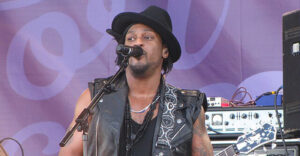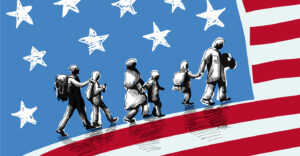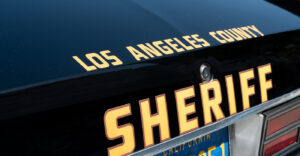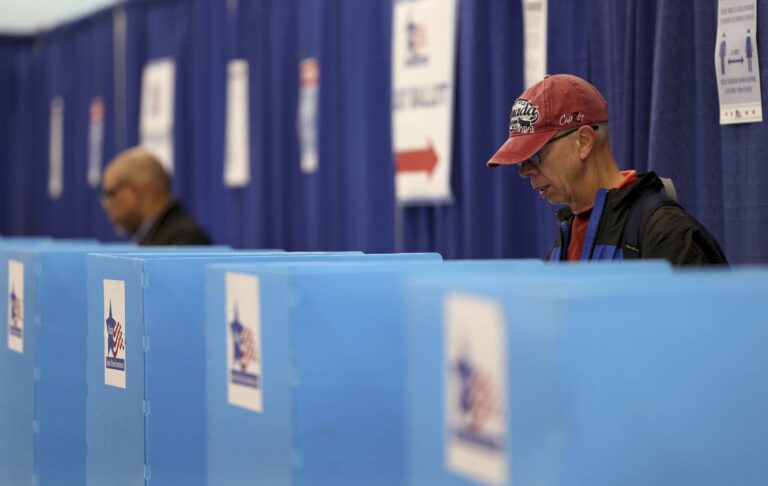A crowd in Pilsen — many dressed in the unmistakable colors of purple and gold symbolizing the politically powerful Service Employees International Union — gathered last Saturday as part of an election ritual of getting out the vote, in this case for Democratic Gov. J.B. Pritzker.
“When times get tough, and they really got tough during the beginning of COVID, you find out who your friends are and J.B. has been a friend to all front-line workers, all workers in Illinois,” said Kim Smith, a patient care technician for Northwestern Medicine, at a rally featuring Pritzker and the rest of the Democratic statewide slate. “He and the other candidates that we’re standing with today, they stood up for us and that matters. So that’s why we’re going to stand up for them — by voting this election,” she said.
Advertisement
A few days later, in a ballroom in the political battleground of the suburbs, state Republican Party Chair Don Tracy laid out the task before hundreds of supporters of GOP governor candidate Darren Bailey.
“It’s a midterm election and in a midterm, turnout is everything. We have got to get Republicans who vote in the presidential election, but normally don’t vote in the midterm, to get out and vote. And we have to get independents to get out, conservative independents,” he said. “And don’t give up on those soft D’s either. Some of them are pretty conservative.”
Advertisement
In the closing days of the Nov. 8 campaign, TV sets will continue blaring millions of dollars worth of ads involving candidates for governor and a pair of state Supreme Court seats all the way down to myriad congressional and state legislative contests. But the real work for the campaigns now comes down to “GOTV,” the get-out-the-vote efforts to ensure candidates’ base voters show up at the polls as well as the remaining late-deciding persuadable voters — a number that dwindles with each day of early voting and voting by mail.
In-person early voting and mail-in balloting has been going on for weeks and data shows the number of ballots cast before Election Day is running slightly ahead of the last midterm election in 2018 statewide, though lagging slightly in Chicago.
Data behind the early voting so far shows expected partisan trends — particularly after former President Donald Trump told Republicans he disdained and did not trust early voting and vote-by-mail ballots and backed in-person voting on Election Day.
Of the 677,000 early votes cast in Illinois through Monday, more than twice as many Democrats as Republicans have filled out ballots — 404,374 to 193,177, according to L2, a national firm that has spent more than 50 years researching voter data and demographics. The other roughly 80,000 voters had no previous partisan voting history. Since Illinois does not have true party registration, the figures are based on personal voting history in party primaries, including on June 28.
More than 80% of the early votes were cast by older voters, age 50 and above, with voters 65 and older, a reliable voting demographic, casting 56% of the early ballots. Female voters accounted for 55% of the early vote, and men made up 45%, the L2 analysis showed.
Geographically, 65% of the early votes were cast in the six-county Chicago metropolitan area, with 35% coming from Chicago and suburban Cook County, 10% from DuPage, 8% from Will and 5% apiece from Lake and Kane. McHenry County has cast 2% of the state’s early votes.
Of the early votes already cast, 35% of Democrats also voted in the June 28 primary compared with only 17% of Republicans who cast a primary ballot. That leaves the potential for a final flurry of balloting on both sides, with Republicans counting on a heavy in-person Election Day vote as races in the one-party blue state show signs of tightening.
As voting continues through Tuesday along with the TV ads, the campaigns for governor, their local party organizations and their allies are relying on traditional strategies such as sending teams to canvass door-to-door and phone banking. They are also using more recent techniques such as digital ads, social media and text messaging.
Advertisement
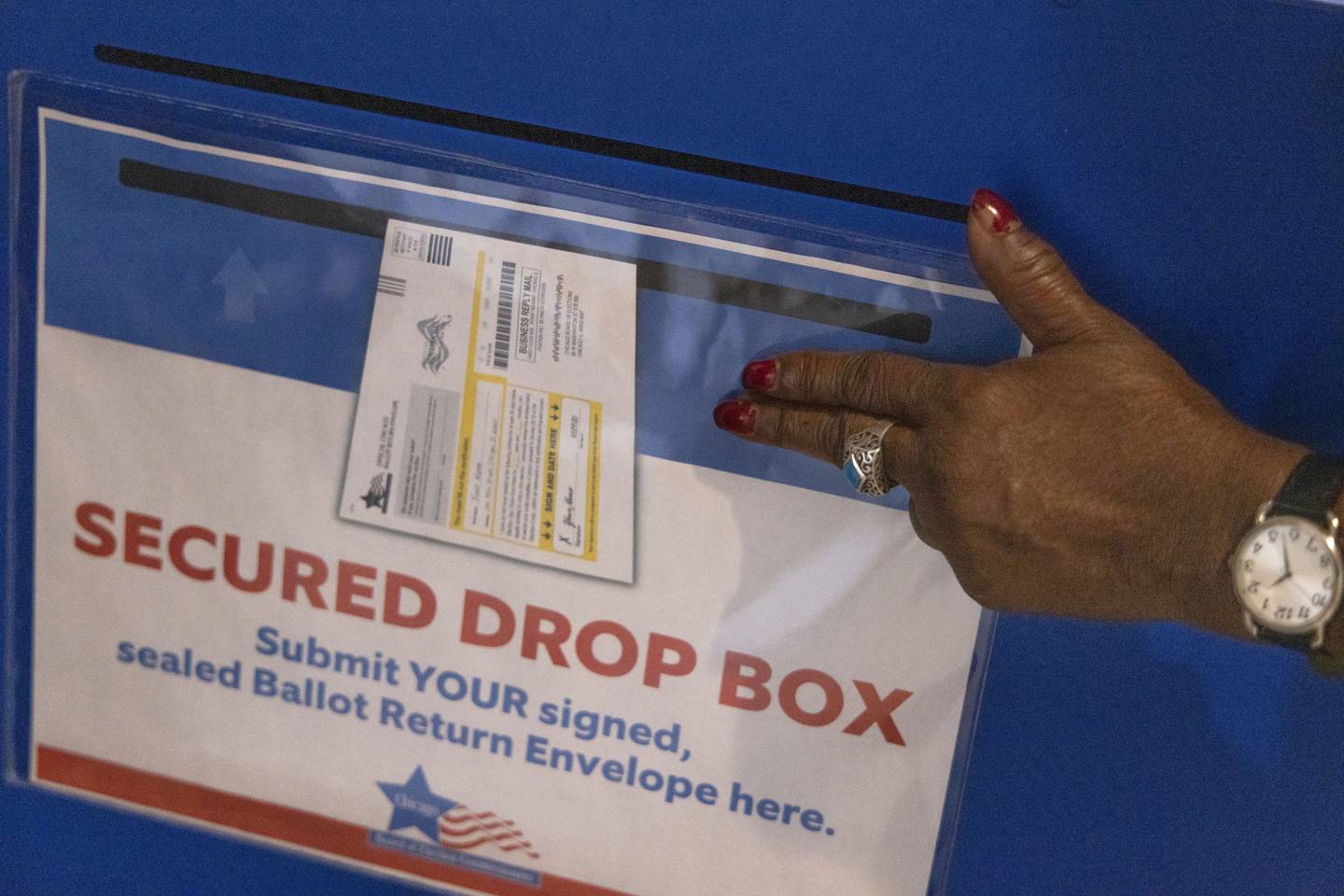
“There are several thousand people knocking on doors across Illinois and making phone calls,” Bailey said in one of his near daily Facebook Live posts on Tuesday.
“Up until the very day (of Election Day) we’re spending money on digital ads, getting out to the people that we may not reach through this Facebook post or through me walking and meeting on the streets,” he said. “So we covet your support. We covet your help.”
Bailey’s chances for success are heavily dependent on a strong Election Day turnout, starting with a localized grassroots base in downstate, where he is a state senator, reversing Democratic gains in the once GOP-heavy collar counties and an ad strategy from an allied political action committee aimed at depressing Black support in Chicago and the suburbs for Pritzker.
Bailey is heading back downstate to end the week with rallies in Effingham, near his home in Xenia, an area with many GOP voters outside Metro East near St. Louis, Bloomington, Rock Island and the Rockford area before culminating with a rally on Sunday evening at Daley Plaza in Chicago.
For Pritzker, his campaign is concentrating the final days of the election on reinforcing his base in Chicago and the suburbs, building on a theme of protecting abortion and gay rights following the U.S. Supreme Court’s decision to return the issue of legalized abortion to the states. The first-term Democratic governor even attended a get-out-the-vote event Tuesday night at a drag show.
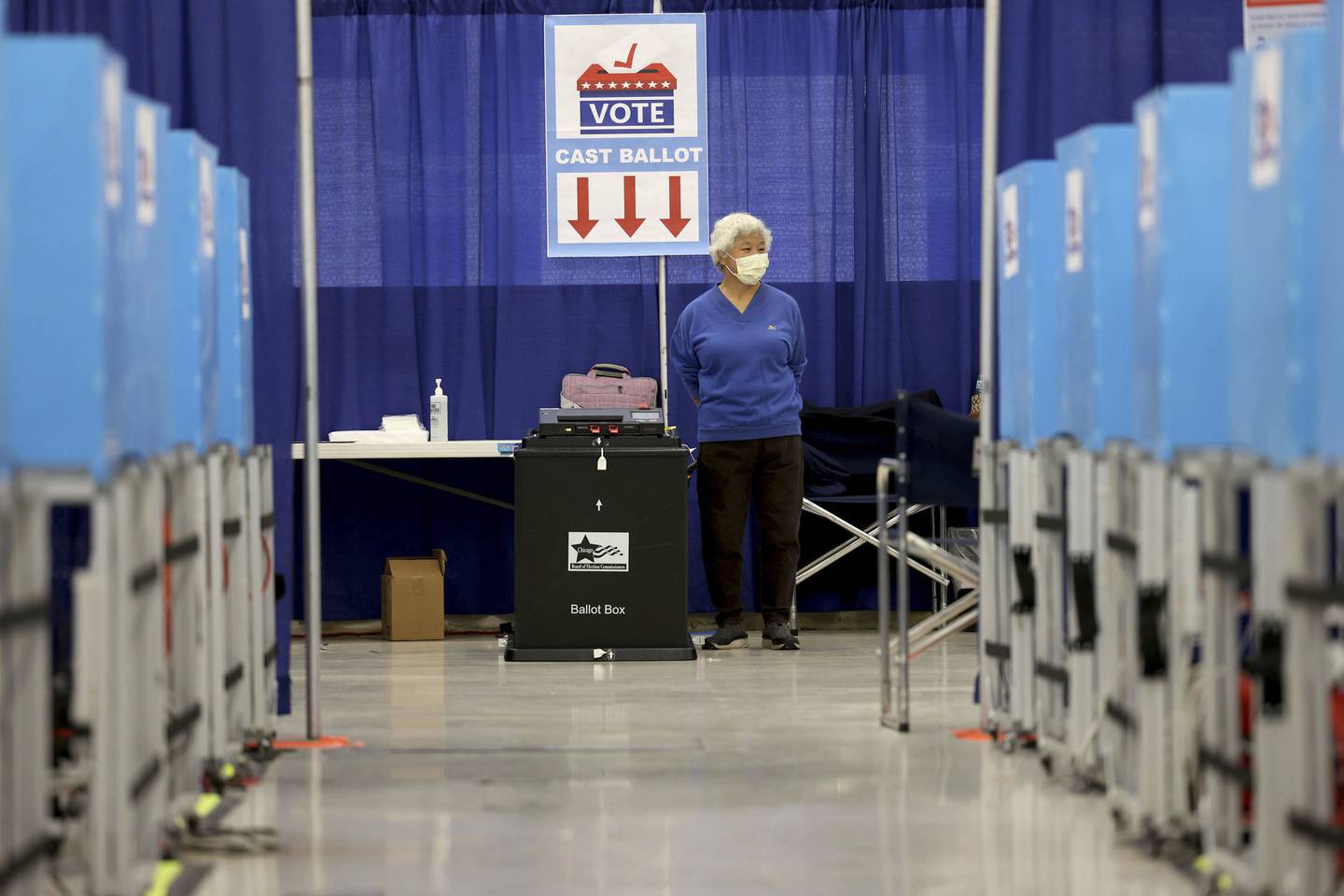
“He is joining pro-choice, pro-worker candidates in every corner of the state to knock on doors, make phone calls, and text voters every day to get out the vote for Democrats up and down the ballot,” a campaign spokeswoman said. “With over 30 upcoming events in nearly every region of Illinois, our campaign is ensuring all voters know how important it is to make their voices heard this year.”
Advertisement
One critical factor for Pritzker and Democratic turnout is ground game support from organized labor — something that is being ramped up with the addition of a proposed state constitutional amendment atop the general election ballot that would enshrine a right to collectively bargain in the state’s primary governing document. Several of Pritzker’s final rallies are being held in conjunction with a union push for the proposed amendment.
“We’re doing everything we always do — only more,” said Tim Drea, president of the Illinois AFL-CIO, the major umbrella organization for organized labor in the state.
“We are doing phones. We’re doing precinct walks. We are talking to members at the worksite,” Drea said of efforts to push the amendment as well as union-backing for Democrats in major state races.
Raising the specter of Pritzker’s predecessor, one-term Republican Gov. Bruce Rauner, and his anti-union agenda also is part of organized labor’s strategy.
“Everybody is doing the full labor program,” Drea said. “This will enshrine these rights in the constitution so that no politician can take them away.”
rap30@aol.com
